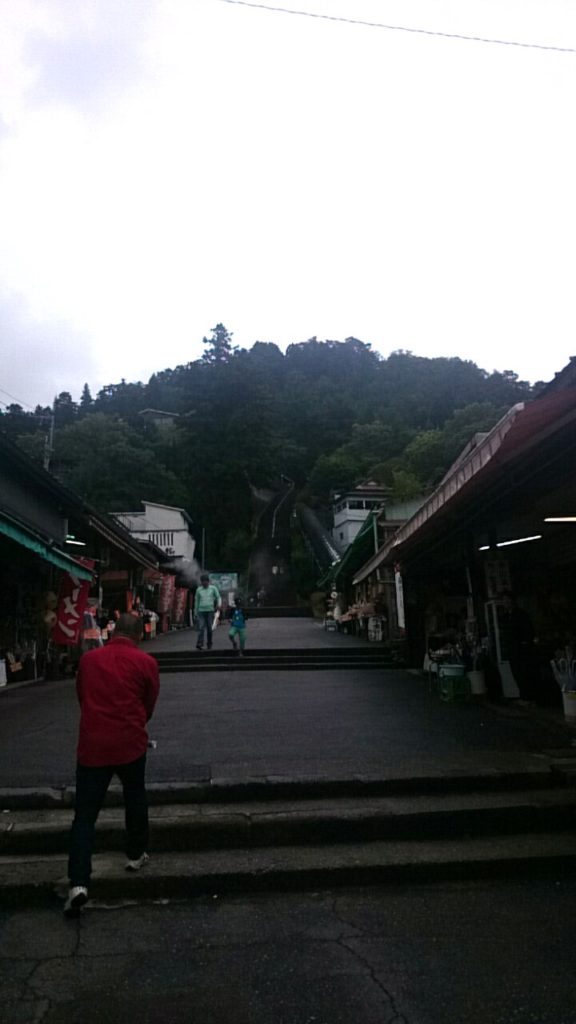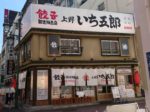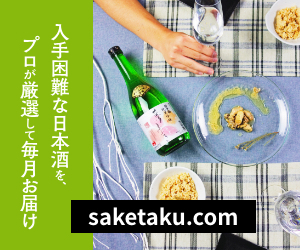- Home
- My Trip Diary
- Iimori Mountain and a story of Byakko Tai
Iimori Mountain and a story of Byakko Tai
- 2018/3/19

Good evening!
Thank you very much for reading this blog.
It’s been 1 week since last update.
I managed to update every day last week because it was Golden Week, but as soon as the holiday ended, working for 14 hours every day made it difficult…….
Anyway, I introduced “Sauce Katsu Don” at “Hetsuri Garden” in the last article.
Today’s topic is about “Iimori Mountain” in Aizu Wakamatsu City which I visited after the big Katsu lunch.
To Iimori Mountain
After lunch, I drove my car again to the north on National Route 118.
On the way, there were a reservoir called “Wakasato Lake”, and “Ashinomaki Onsen”.
I changed the way to Prefecture Route 64 in Aizu City, and arrived at Iimori Mountain after going on a little narrow road following the sign boards.
As Iimori Mountain is a big popular tourist site, there are many souvenir shops with parking areas.
I found a space in a parking site run by the city near the entrance of Iimori Mountain.
I remember it was around 14:30 at that time.
I left my car and walked to the entrance. The next photo is the mountain I saw when I was walking.
Beginning of Aizu war
There might be no need to explain, but just in case; This mountain is very famous as a place where young 16 to 17 year old soldiers of “Byakko Tai” which was a samurai soldier group of Aizu Domain died honorable death.
Here, I’d like to talk about the history (I guess it will be long again…^^;).
This time I attached a map for the first time. Hope it will help.
Circles with 3 dots are castles, and x are battlefields.
In June1868 (Japan’s old calendar was used in those days, but I use new calendar here.), new Meiji government moved to suppress Oh-U-Etsu Reppan Domei; a union mainly consisted of 2 domains, Aizu Domain who raised the Emperor but didn’t accept the new government, and Sendai Date Domain who agreed with and helped Aizu.
Meiji government went to Shirakawa City in Fukushima Prefecture (south next of Inawashiro Lake in the map), and assaulted Shirakawa Komine Castle which was protected by the union countries of Tohoku area.
Shirakawa City was the entrance of Tohoku, so the Tohoku domains including Aizu concentrated their army on Shirakawa Komine Castle to get it back.
Meiji government made use of it.
A party led by Taisuke Itagaki (He became prime Ministry afterwards) took the castle of Tanagura Domain which stood in Tanagura town, the south east of Shirakawa City.
Furthermore, he made Miharu Domain at the north of Tanagura to surrender, and then in September, Itagaki went up further to the north and Nihonmatsu Castle of Nihonmatsu Domain.
Battle at Nihonmatsu and Nihonmatsu young soldiers
When the new government army approached, there was an argument in Nihonmatsu Domain to decide which to take, surrender or battle.
Words of a minister of Nihonmatsu, Tomitake Niwa, led them to choose fighting; “Keep the faith at the risk of life, it is Samurai!”
As Nihonmatsu didn’t have a big military, young boys around 12 to 17 years old were also conscripted for the war.
Nozu Michitsura who was in the government army and later led the forth troop in the Russo-Japanese war described it as “the roughest battle in Boshin War”.
Battle of Bonari Toge & Ju-Rokkyo
By conquering Nihonmatsu, the government army became able to attack both Sendai Domain who had the biggest power in Tohoku area and Aizu Domain who was the symbol of the old government system.
After a big discussion, the government army decided to capture Aizu, and they chose Bonari Toge, pass, as the route to Aizu which was a detour but less defense.
Aizu Domain who noticed it sent more force to Bonari Toge. The team who was sent from Aizu was the old government troop led by Keisuke Otori, and “Shinsen Gumi” led by Toshizo Hijikata was also in Otori’s team.
The battle between Aizu and the new government started at Bonari Toge in October.
Aizu did a good fight under Keisuke Otori’s command first, but the inferiors of soldiers and weapons were an obvious disadvantage for Aizu.
The battle finished after a day with Aizu’s loss, and Aizu ran back to the Aizu Wakamatsu castle.
Meanwhile, the new government army quickly advanced to the south to reach Inawashiro on the next day, and after to the west to Aizu.
Aizu needed to delay the new government’s pace to make time to prepare for besiegement, so they tried to break a bridge called Ju-Rokkyo which was built over Nippashi River from the north-west edge of Inawashiro Lake because this bridge was the only route to Aizu.
However, because the bridge was made with stones, it took for a long time to break the bridge. The new government wanted to arrive at this bridge before it was broken, and finally reached during Aizu’s operation.
A fierce battle occurred at the bridge, and Aizu couldn’t stand and gave up breaking the bridge and withdrew.
Byakko Tai went to the battle
This loss was a fatal problem for Aizu because many Aizu’s troops were placed at border line such as Shirakawa or Niigata, and the new government force reached very close to the castle and there were no barriers to stop the government’s approaching such as mountain passes any more.
To stop the new government’s coming, Katamori Matsudaira, Lord of Aizu, decided to mobilize the reserves, and one of the teams was Byakko Tai.
Byakko Tai consisted of 16 to 17 year old boys from samurai families, and there were divisions such as “Shichu Ichiban (first) Tai”, “Niban (second) Tai”, “Yoriai Ichiban Tai”, “Niban Tai”, and “Ashigaru Tai” according to their social standings. The group whose members killed themselves on Iimori Mountain was Shichu Niban Tai.
Katamori Matsudaira should have hesitated to place such young boys at the front line, so kept them near him as the reserves at first.
However, as the situation became worse and worse, he didn’t have choice other than sending the boys of Shichu Niban Tai to the very front line in Tonoguchihara.
Byakko Tai did their best, but the number of soldiers, arms, and experiences were much less than the new government army.
It ended up with evacuation of Byakko Tai soon.
After this, the story comes to the tragedy of Iimori Mountain.
I will write about the last part in the next blog.
It's our great pleasure if this article is helpful for you.

Restaurant Information
| Shop Name | |
|---|---|
| Prefectures | - |
| Tel | |
| Address | |
| Nearest Station | |
| Homepage | - |
| Business Hours | - |
| Holiday | |
| Introduction | |
| Sake List |
|



